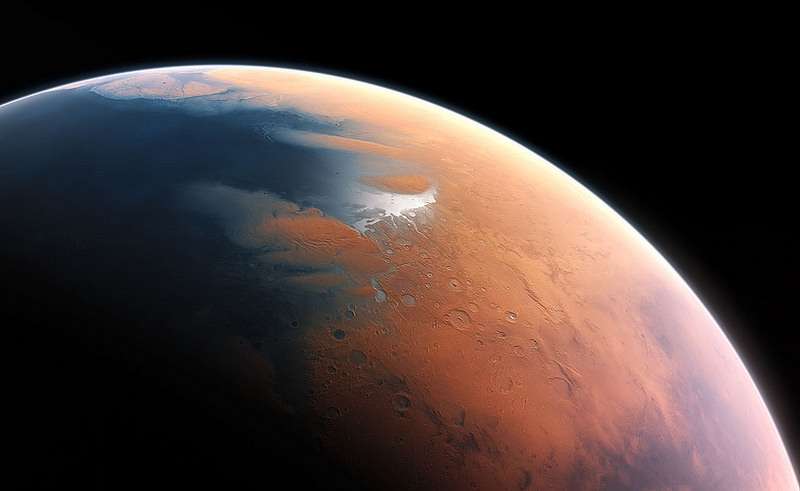What it would take for life on Mars

In light of NASA's recent evidence that liquid water flows on present-day Mars, the release of sci-fi film The Martian could not have come at a better time.
When astronaut Mark Watney (Matt Damon) is left behind on Mars without enough air, water or food to survive, his solution is to "science the s**t" out of it…" but what would you really need to do to survive on the Red Planet?
Life on Mars
Curtin University astrogeologist Martin Towner, who worked on the ill-fated Beagle 2 spacecraft, says humans would have to contend with Mars' freezing temperatures and low air pressure for a start.
A typical day on Mars features a temperature best described as "Siberian cold", ranging from -20⁰C to 0.5⁰C.
You could embrace your inner earthworm and try living underground but Dr. Towner suggests that won't solve all of your problems.
"You can't breathe the air so you have to either bring it all with you, or make it on Mars," he says.
Growing food
Assuming you managed to breathe, stay warm and survive your first few days on Mars, the next big problem you would face is growing food.
"The native outside temperature is way too low for plants, so you need a greenhouse," Dr Towner says.
Unfortunately the low pressure on Mars isn't ideal for plant growth either, as plants rely on atmospheric pressure to draw water from the soil.
If astronaut Watney wanted to guarantee the production of edible food, his best bet would be to invest in a pressured chamber, most likely before leaving Earth.
Additionally, Mars has no life that we know of—and that means none of the microbes that encourage plant growth on Earth.
"The soil is probably very good in nutrients and trace elements but would have no fungi, microbes or organic matter," Dr Towner says.
Communicating with Earth
Getting the challenges of day-to-day 'Martian' life off your chest, is not as simple as pulling out a satellite phone and calling home.
Dr Towner says the main issue is a 15-minute time delay due to the speed of light.
"You could have an email conversation but not a Skype call," he says.
These challenges aside, with NASA's recent water discovery, life on Mars may be closer than imagined.
"It seems that the more we study Mars, the more we learn how life could be supported and where there are resources to support life in the future," NASA Mars Exploration Program lead scientist Michael Meyer says.
Provided by Science Network WA
This article first appeared on ScienceNetwork Western Australia a science news website based at Scitech.




















